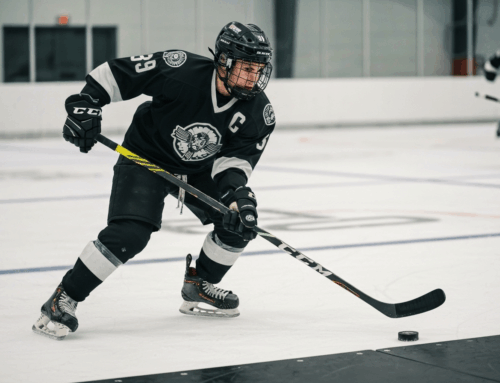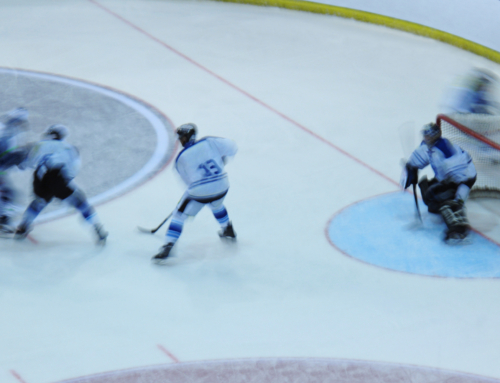Master Your Stride: How to choose the right ice hockey skates with Charlotte Hockey Lab
Introduction: The Foundation of Your Hockey Game
In the fast-paced world of ice hockey, your skates are far more than just equipment; they are a direct extension of your body on the ice. The ability to glide, accelerate, stop, and turn with precision hinges significantly on a single, critical factor: how well your skates fit. To truly master your stride and elevate your game, you must first learn to choose the right ice hockey skates. This comprehensive guide, brought to you by Charlotte Hockey Lab, will break down every essential aspect of skate selection, fitting, and maintenance, ensuring you step onto the ice with confidence and comfort.
Why Proper Skate Fit is Crucial for Performance and Comfort
Many players, from aspiring novices to seasoned veterans, underestimate the profound impact of a properly fitted skate. An ill-fitting skate is not merely uncomfortable; it actively hinders your performance and can lead to a host of issues, including blisters, foot pain, and even long-term injuries. As experts at New To Hockey highlight, if your foot moves inside the skate, your ability to skate quickly and efficiently is severely compromised. A snug, responsive fit ensures maximum energy transfer from your body to the blade, allowing for explosive strides and agile movements. Conversely, skates that are too large can feel unsteady, while those that are too small will cramp your feet and restrict blood flow, leading to discomfort and reduced precision on the ice.
Understanding Ice Hockey Skate Components: Boots, Holders, and Runners
To truly appreciate the nuances of skate fitting, it helps to understand the fundamental components that make up an ice hockey skate. Each part plays a vital role in connecting you to the ice and influencing your performance:
- Boot: This is the primary structure that encases your foot and ankle. Modern skate boots are complex, engineered from various materials like leather, nylon, and advanced composites. Their design focuses on providing essential ankle support, stiffness, and comfort.
- Holder: A molded plastic piece securely riveted to the bottom of the boot, the holder is where the blade is attached. Its construction influences the skate’s overall stability and responsiveness.
- Runner (Blade): Often referred to simply as the “blade,” this is the steel strip that makes direct contact with the ice. The runner’s profile, material (often tempered steel coated with chrome or even titanium), and sharpening hollow significantly affect grip, glide, and maneuverability.
Understanding these elements is the first step in making an informed decision when you choose the right ice hockey skates for your individual needs.
Key Factors to Consider When You choose the Right Ice Hockey Skates
Selecting the perfect pair of skates goes beyond simply picking your shoe size. Hockey skates are designed for a much snugger fit. Generally, men’s hockey skates are 1 to 1.5 sizes smaller than their US shoe size, while women’s skates are typically 2 to 2.5 sizes smaller. However, this is just a starting point. Critical factors for optimal fit include:
- Foot Length and Width: Accurately measuring both feet is crucial, as one foot can be larger than the other. Beyond length, consider your foot’s width across the forefoot and its overall volume. Brands offer various width options (e.g., C, D, E, EE) and fit profiles (tapered, contoured, traditional) to accommodate diverse foot shapes.
- Foot Volume and Arch Type: Foot volume refers to the height and overall shape of your foot. Players with high arches may require skates with more internal volume or additional arch support through aftermarket insoles. Conversely, flatter feet might benefit from low-volume skates. The Hockey Monkey sizing guide emphasizes checking your arch type using a simple wet footprint test to find the best insole support.
- Playing Style and Level: Your skating style and frequency of play should also influence your choice. Recreational skaters prioritize comfort and durability, while competitive players may seek stiffer boots for enhanced energy transfer and responsiveness. As Bauer’s ultimate skate buying guide explains, different skate “families” (like Vapor for agility and Supreme for power) are engineered to complement specific skating styles.
The Step-by-Step Skate Fitting Process: Achieving the Perfect Fit
Once you’ve considered the key factors, it’s time for the crucial fitting process. This hands-on approach ensures your skates truly become an extension of your body:
- Wear Proper Socks: Always try on skates with the same type of socks you plan to wear during games. Thin, performance-oriented skate socks are generally recommended for maximum feel.
- Lace Up Fully: Evenly lace the skates from bottom to top, ensuring a snug fit without over-tightening. The goal is to lock your heel into the heel pocket while allowing for proper ankle flexion.
- The Toe Brush Test: When standing upright in unlaced skates, your toes should just barely brush the toe cap. Once laced and you adopt a hockey stance (knees bent), your heel should settle back, and your toes should no longer press against the cap.
- The Finger Test: With skates fully laced and in a hockey stance, try to slide one finger between your heel and the skate’s interior. For adults, there should be minimal to no gap, indicating a secure heel lock. For growing children, a single finger’s width can allow for growth without sacrificing too much support.
- Walk Around: Move around in the skates to identify any pressure points or discomfort. They should feel snug, like a firm handshake, but not painful.
- Consider Skate Baking: Many intermediate and elite-level skates are “heat-moldable.” This process, often done in a specialized oven at a pro shop, softens the boot’s materials, allowing them to mold precisely to the contours of your foot for a custom, glove-like fit. This significantly shortens the break-in period and can alleviate common pressure points.
Navigating Brands and Fit Profiles: Bauer, CCM, and More
The hockey skate market is dominated by a few key brands, each offering distinct fit profiles. Understanding these differences is essential to finding the best match for your foot anatomy:
| Brand | Fit Profiles | Characteristics | Ideal For |
|---|---|---|---|
| Bauer | Vapor, Supreme, Nexus (now Fit 1, 2, 3) |
|
Players prioritizing agility (Vapor), power (Supreme), or comfort for wider feet (Nexus/Fit 3). |
| CCM | Jetspeed, Tacks, Ribcor |
|
Players seeking quickness (Jetspeed), stability and power (Tacks), or dynamic agility (Ribcor). |
As Sports Excellence notes, while Bauer often provides a snugger, locked-in feel, CCM skates may offer a slightly roomier toe box. Trying on different models from both brands is highly recommended to determine which feels best for your unique foot shape and playing style.
Maintenance Matters: Keeping Your Skates in Top Condition
Once you’ve found the perfect pair of skates, proper maintenance is key to their longevity and continued performance. Consistent care will ensure your skates remain responsive and comfortable on the ice:
- Sharpening: Regular sharpening is paramount. Dull blades compromise grip, glide, and overall control. The frequency depends on your ice time, but many competitive players sharpen every 2-3 hours of ice time. Charlotte Hockey Lab offers expert skate sharpening services to keep your edges razor-sharp.
- Drying: Always dry your skates thoroughly after each use. Moisture trapped in the boots can lead to breakdown of materials, odor, and even compromise the fit over time. Remove insoles to allow for complete air circulation.
- Cleaning: Regularly clean both the interior and exterior of your skates to prevent dirt and sweat buildup from affecting comfort and material integrity.
- Adjustments: Over time, skates will “pack out” as the internal foams compress. Periodically check the fit and adjust your lacing technique to maintain the desired snugness and support.
Signs It’s Time for New Skates: When to Upgrade
Even with meticulous care, hockey skates have a lifespan. Knowing when to upgrade is crucial for maintaining performance and preventing injury:
- Loss of Support: If the boot feels soft, loses its stiffness, or your ankle frequently rolls, the support structure has likely broken down.
- Excessive Pain or Hotspots: Persistent pain, numbness, or recurring blisters despite proper fitting and break-in indicate that the skates are no longer suitable for your feet.
- Cracked or Damaged Components: Inspect the boot, holder, and blade for visible cracks, rust, or significant damage. A compromised holder or blade can be dangerous and impact performance.
- Significant Growth (for Youth Players): For growing players, outgrowing skates is a primary reason for replacement. While allowing for a small amount of growth space is acceptable, skates that are too big will hinder skill development and cause discomfort.
Enhance Your Performance: How Charlotte Hockey Lab Supports Your Skate Journey
At Charlotte Hockey Lab, we understand that optimal skate performance is fundamental to your success on the ice. Our state-of-the-art facility is equipped with cutting-edge technology and experienced professionals dedicated to helping you maximize your potential. From ensuring your skates are perfectly sharpened to providing a comprehensive skate analysis, we are here to support every step of your hockey journey. We offer personalized insights to help you choose the right ice hockey skates, understand advanced sharpening profiles, and address any fit issues you might encounter. Our commitment to advanced hockey technology ensures you have access to the best tools for off-ice skill refinement and training.
Conclusion: Master Your Stride, Master Your Game
Choosing the right ice hockey skates is an investment in your performance, comfort, and passion for the game. By understanding the critical role of fit, knowing your foot’s unique characteristics, and recognizing the importance of consistent maintenance, you empower yourself to unlock your full potential on the ice. Remember, the perfect fit means no wasted energy, maximum control, and an unparalleled connection to the game. With the guidance provided and the expert support available at Charlotte Hockey Lab, you’re now ready to confidently select your skates and master every stride, every turn, and every play.
Visit our Contact Us page.

We use only the finest ingredients to produce stellar tastes.












